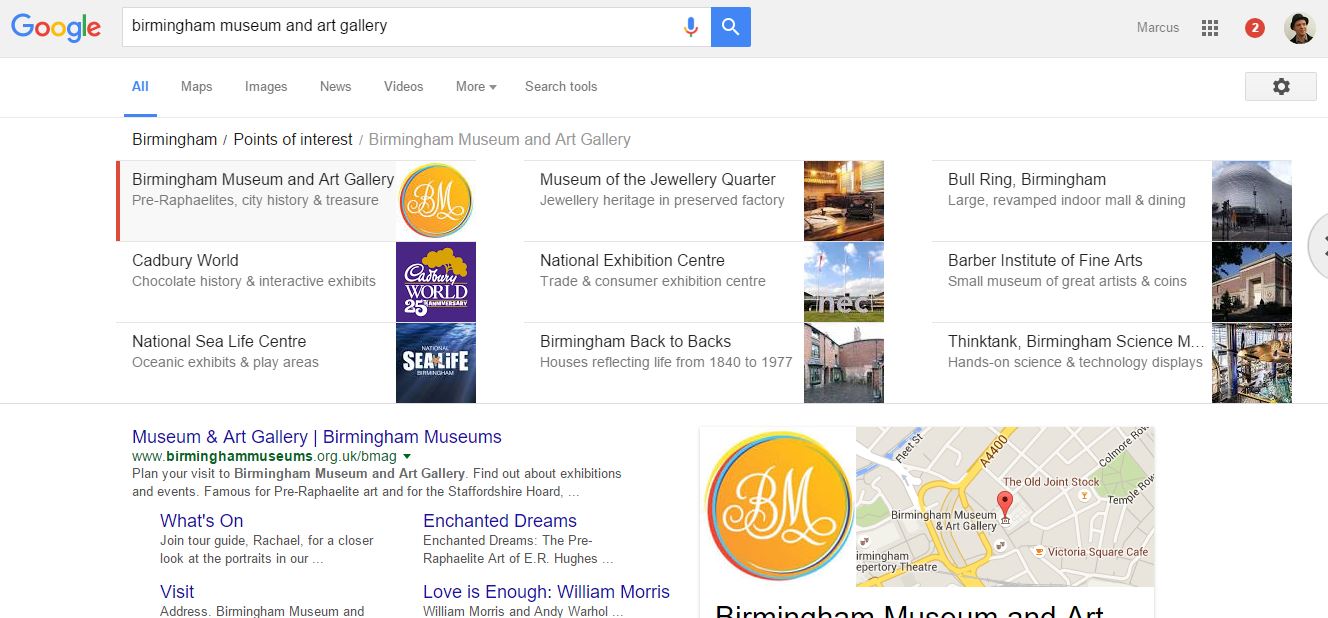As Google grows in (artificial) intelligence the search engine becomes an ever more useful source of day-to-day information. That is the search engine provides answers direct rather than directing us to a source of information. A new example of this is the ‘things to do’ layout I first spotted on Friday 15th Jan 2015.
Searching for ‘things to do in Birmingham’ would historically have returned results of sites like Trip Advisor, the Birmingham Mail and such at the top of the page. Now, though, we have a list of activities that Google returns directly above the search results:

Google now provides you with a way to access information on these properties direct from the search results. If we click on one of these listings these don’t jump us to the specific website but rather it creates a new query about the specific entity that was clicked.
The following shows what happens when I click the first of the suggested ‘things to do’ for Birmingham Museum.

What does this mean for your business?
Well if you are Trip Advisor, Google may well be providing a way for users to circumvent a visit to that site and get information about things to do in a given location directly from Google search results. Trip Advisor may not be the best example here as they provide a wealth of information from their extensive user base that any given website and certainly Google search results would struggle to match.
The main takeaway here is that Google is always trying to provide search engine users with the information they need without leaving the search engine. So, you must ensure that the search engine understands your brand, business, services, activities, locations and anything of note.
Ensuring that you pay attention to Google’s own platforms like Google My Business and information regarding your business on third party sites like Yell.com and Trip Advisor is paramount here. This is very similar to what we see in the local SEO where the consistency of name, address and phone number (NAP) is critical to ensure strong local rankings.
Putting this into practice
There is no need to overcomplicate things here and there are a few key factors that help Google understand your business.
- Keep your website up to date and follow search engine best practices. Ensure locations and services are clearly indicated.
- Claim your Google My Business listing and ensure it is kept up to date
- Claim any business listings and ensure they are kept up to date and clearly indicate where you are and what you do
- Review any well ranked third party sites for your locations and services and ensure you have a well thought out presence on such sites
Further to these guidelines simply searching Google for your name, services (keywords), location, phone number, address and anything else relevant will return a potential treasure trove of optimisation goodies.
Always try to keep abreast of changes in the search results and consider how these changes can positively or negatively impact your business. Trip Advisor may lose some traffic here but they have a strong case for users to seek them out – small businesses websites are often not so rich in information so ensuring you can be found by your target audience is critical.






